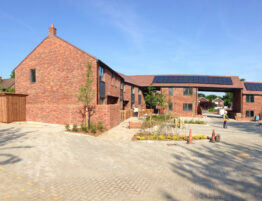
Just a few weeks ago, we explored how data centres could act as a bright new dawn for the UK construction sector – offering strong demand, diverse project types and potential for retrofits and technical innovation.
Yet where opportunities arise, so often do unexpected hurdles. Today, data centres remain a major growth driver, but their extraordinary demand for electricity has collided with grid limitations – creating another obstacle that construction projects must overcome. Find out more in this week’s blog.
A new threat
As the UK construction industry navigates ongoing challenges, a new threat has emerged that rivals the long-standing issue of planning delays: power grid access.
According to Turner & Townsend’s (T&T) 2025 Construction Market Intelligence Report, growing delays in securing electricity connections are now jeopardising project delivery across the sector – especially in data centre, housing and infrastructure development.
Electricity demand surges
The UK’s electricity demand is expected to rise by 50% over the next decade and double by 2050, driven largely by the rapid expansion of data centres – a sector experiencing explosive growth due to the increasing dominance of cloud computing and artificial intelligence. National Grid warns that, by 2050, the country’s data needs alone could consume as much energy as the entire industrial sector does today.
While the shift away from fossil fuels is crucial for the environment, this is another factor in the surging demand for electricity. More homes are transitioning from gas boilers to electric heat pumps, with domestic electricity usage already climbing 2% in the first part of 2025 (compared to the previous year).
This grid strain is also a symptom of a broader infrastructure transformation. The UK government’s long-term infrastructure strategy and National Grid’s decarbonisation efforts aim to boost generation and transmission capacity – but that will take time. Notably, the National Grid’s own connection assistant tool now estimates that most new applications won’t be connected until 2036 or later!
Meanwhile, infrastructure construction is outpacing housebuilding in terms of volume and growth. Infrastructure saw a 127.8% year-on-year increase in new orders during Q1 2025 and this trend is expected to continue as national priorities shift towards net zero and digital connectivity.
Regional capacity constraints
The impact of all of this is that developers are now facing prolonged delays (often stretching into years) when trying to connect to the power grid. This is particularly acute in capacity-constrained areas such as West London, Swindon, Milton Keynes, Oxfordshire and Cambridge. Local councils report that property and commercial schemes are frequently being postponed or abandoned due to insufficient power availability.
Chris Trew, director at T&T Alinea, emphasised the regional disparities:
“Significant work is being done to boost the UK’s generation capacity and improve its transmission network, but the availability of power connections can still vary greatly by region… it’s seldom as simple as ‘build here and you’ll get a connection quickly’.”
Financial impact
This grid bottleneck is not just an operational headache – it’s a financial one. T&T forecasts that tender price inflation for building construction will increase from 3% in 2025 to 3.5% in 2026, while infrastructure inflation will grow from 4.5% this year to 5% by 2028. In many cases, the delays are already being factored into supplier bids as a hedge against uncertainty.
Martin Sudweeks, T&T’s UK managing director of cost management, notes:
“This surge in demand will only add to the intense competition between construction projects, presenting a risk that costs could rise as suppliers factor uncertainty into their tender prices. Successfully managing power access is now mission-critical to keeping costs stable and delivery on track.”
Regulatory shifts add further complications
The UK’s complex energy landscape, comprised of 14 separate Distribution Network Operators, further complicates the process. Until recently, the grid followed a ‘first come, first served’ approach. However, since Spring 2025, the rules have changed to a ‘first ready, first connected’ model. This incentivises projects that are shovel-ready, with completed land acquisition and planning permissions.
Additionally, developers now need to provide a Letter of Authority from landowners when applying, in a move to discourage speculative bids and prioritise feasible schemes.
A defining challenge for the years ahead
With rising competition from energy-intensive sectors like AI and cloud storage, coupled with an aging grid infrastructure, power connectivity has become a defining challenge for the next generation of UK construction.
This means electricity connection delays are no longer a secondary issue – they are now a top-tier risk for construction timelines and budgets. Developers must factor power access into early-stage planning and adopt agile strategies to stay ahead in an increasingly crowded queue.
To stay competitive and reduce risk, T&T advises developers to:
- Explore temporary low-capacity connections
- Prioritise brownfield sites with existing power infrastructure
- Consider on-site generation, including solar or battery storage systems
Tell us what you think. Are your construction projects affected by power supply issues? Are the recommendations given by T&T workable? Join the conversation on our Facebook or LinkedIn pages.
30.07.2025
Feature image: Freepik








